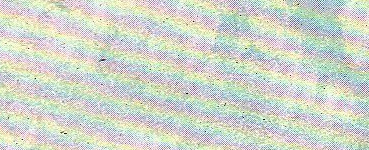How to reclaim downloaded pictures that should be public-domain:
1. Remove watermark logos. InPaint ($s). Has a cheesy home-page, but it’s been tested and works really very well, even on fairly faint logos. Use the magic wand, in combination with the tolerance slider, to select the letters or symbols you want to remove. Can save your letter-picks as a repeatable mask, but that mask can only be applied on a repeat picture of the same size. (Also available as a separate InPaintBatch version for batch processing, of things like time-stamped video frames).
2. Remove hidden watermarks and embedded metadata. Batch Purifier ($s). Tested, works fine, quick and easy to operate.
3. Up-res your pictures. Perfect Resize (now known as On1 Resize, $s). Exactly twice the size should work well. There are presets for portrait, landscape, low-res JPG etc. May also help to remove steganographic watermarks.
4. Clean-up. Photoshop ($s) or your favourite paint software. Crop edges; remove any crude colour-cast (often added on old photos); lift overly-dark shadows with Photoshop’s Shadows/Highlights tool; do some quick spot-repair on damage and mould spots.
5. Colourise (optional). Akvis Coloriage. Tested, but expensive and not great. Rather garish results, though if you spend a day learning it and experimenting you may do better. Probably works best with quite simple crisp portraits. For old postcards, someone with an artistic touch may have quicker and more artistic results by using a new Photoshop layer. Set the layer to Colour blend mode at 80%, then manually paint areas in with a soft brush.
Fully automated recolouring — guided by only a half-dozen colour-dabs — is coming in a few years, but at 2017 is still at the ‘SIGGRAPH demo’ stage, rather than the ‘retail Photoshop plugin’ stage. Nor is there yet a way to segment a picture into smooth-edged secure zones and thus provide what comic book makers call ‘colour flats’ and 3D people call a ‘clown pass’, which would enable quick colouring with the Photoshop paintbucket.
You can also hire a coloriser for a mere $5 on Fivver, of course, but you probably want to make sure they’re doing it by hand. Here’s one that does the work by hand, for a nice price.
You may also have the problem of banded colour moire on scans, which can be very tricky to fix (and which is wholly different than .JPG compression banding)…
There are various Photoshop descreen plugins, such as Sattva Descreen, but note that these are designed to work with big 600dpi ‘hot from the scanner’ scans rather than smaller Web copies. Sometimes on Archive.org or Hathi scans much moire can be removed in Photoshop via: Copy | Auto Contrast | Auto Colour | Desaturate | Paste copy as Layer (in Colour layer blending mode) | Soft erase the worst moire, which will be on pale patches such as roads and skies. Repaint the resulting missing colour using a colour blending brush.
Also, you want to remember that if your original find has been colorised already, from an obviously b&w source, then it’s no longer public domain but a new work. In which case you might want to note the title or geographic location of the work and try to find where their original came from, as it might be in b&w somewhere deep in Archive.org, Hathi, or similar archival websites. If an eBay scan of an old postcard, another vendor may have a better and larger scan. The free Irfanview + a plugin will let you view Archive.org’s highest-res .JP2 scans as Windows thumbnails.

